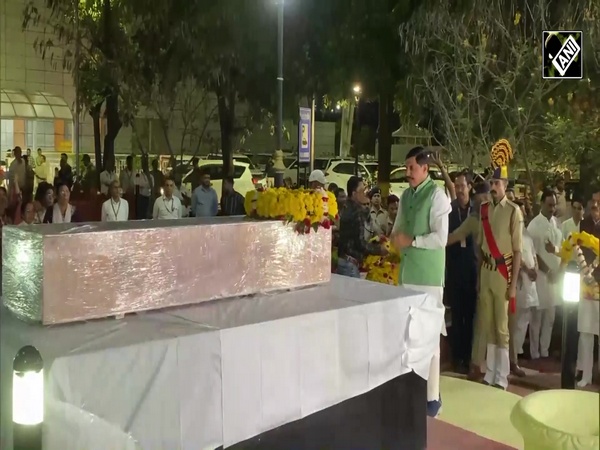Kauvery Hospital Vadapalani Performs Rare Robotic-Assisted Spleen-Preserving Distal Pancreatectomy on 75-Year-Old Patient
Feb 20, 2025

VMPL
Chennai (Tamil Nadu) [India], February 20: Kauvery Hospital Vadapalani, a leading healthcare institution renowned for its advanced surgical techniques, has performed a rare and complex robotic-assisted spleen-preserving distal pancreatectomy on a 75-year-old male patient. The patient, who had a history of heart issues and previous prostate cancer treatment, was diagnosed with a small, slow-growing neuroendocrine tumor (NET) in the pancreas.
The procedure, which requires meticulous precision and expertise, was led by Dr. Swaminathan Sambandam, Senior Consultant & Lead for Multi-Organ Transplants (Liver, Kidney, Pancreas & Small Intestine). Dr. Sambandam, a renowned surgeon in the field of robotic-assisted surgery, performed the operation using state-of-the-art robotic technology to achieve a successful outcome. This surgery is extremely rare and requires highly specialized skills to separate the pancreas from the spleen, a task made even more challenging by the close proximity of blood vessels.
The patient, a 75-year-old gentleman, presented with a 3.5 cm neuroendocrine tumor located on the body of the pancreas. Unlike other types of pancreatic cancer, neuroendocrine tumors are slow-growing, but still pose significant health risks. In most cases, surgery requires the removal of the body and tail of the pancreas along with the spleen. However, this patient's case was particularly unique due to his age, underlying heart condition (pacemaker), and history of prostate cancer treatment.
Given the complexity of the case, and the patient's desire to avoid open surgery, the team chose a robotic-assisted approach, a technique that is extremely rare in India. This method allows for high-precision surgery with minimal incisions, leading to faster recovery times and a more accurate resection of the tumor while preserving the spleen.
The robotic-assisted technique used in this surgery offers significant advantages over conventional laparoscopic and open surgeries. The main challenge of the procedure lies in carefully separating the pancreas and tumor from the blood vessels that supply the spleen, particularly the splenic artery and vein. This is where traditional laparoscopic methods often fall short, as the small blood vessels can be difficult to manage with conventional tools.
However, with robotic technology, the surgeon has enhanced visualization and greater precision in performing the intricate dissection required for this procedure. The robotic arms offer better maneuverability and control, allowing the team to preserve the spleen while successfully removing the tumor and part of the pancreas. The robotic approach also minimizes trauma to surrounding tissues, reducing the risk of complications and ensuring faster recovery.
"This procedure is a great example of how advanced robotic surgery can offer superior outcomes for patients with complex conditions," said Dr. Swaminathan Sambandam. "In this case, the patient not only benefited from a minimally invasive approach but also from the ability to preserve the spleen something that would have been difficult or impossible with traditional laparoscopic methods."
Dr Aravindan Selvaraj, Co-Founder & Executive Director of Kauvery Group of Hospitals Said, "At Kauvery Hospital, we continually strive to offer innovative solutions that improve patient outcomes and quality of life. This case is a perfect example of how technology, combined with the dedication and skill of our healthcare professionals, can provide life-changing results for patients. We thank our patients for entrusting us with their care and will continue to pursue excellence in every aspect of our services, so that Kauvery Hospital remains a leader in specialized healthcare."
The patient had an uncomplicated recovery and was discharged from the hospital just four days after surgery thanks to the advantages of robotic surgery. He has since returned with a successful outcome and a significantly improved quality of life.
(ADVERTORIAL DISCLAIMER: The above press release has been provided by VMPL. ANI will not be responsible in any way for the content of the same)




















